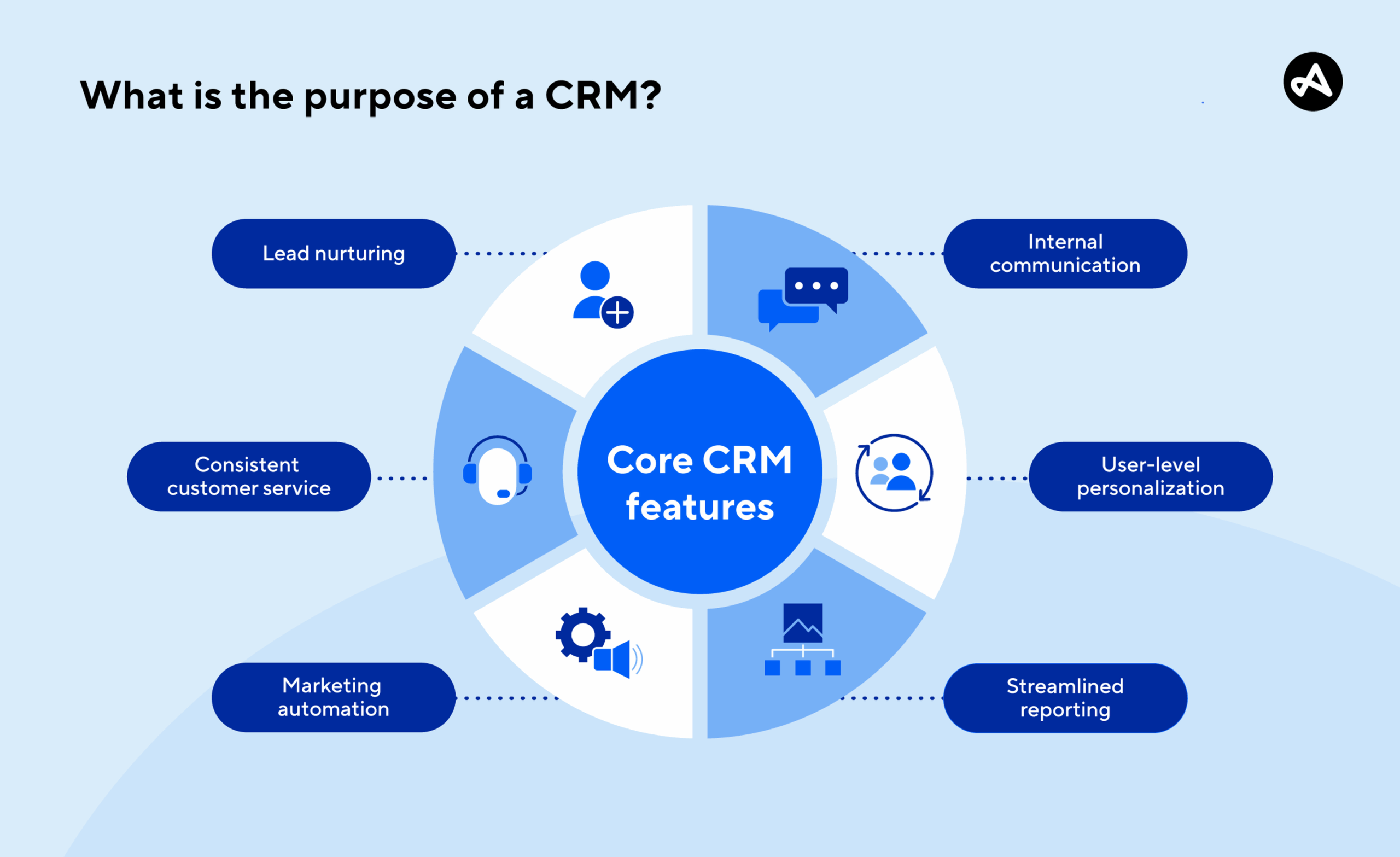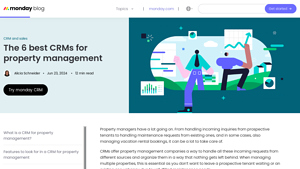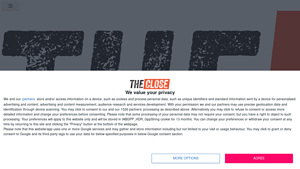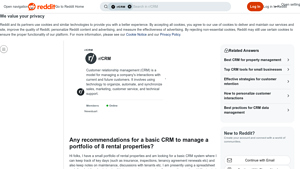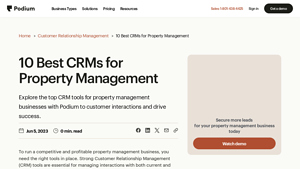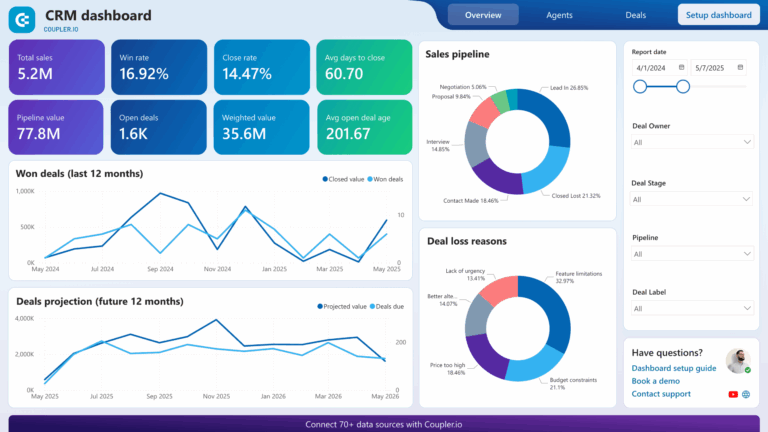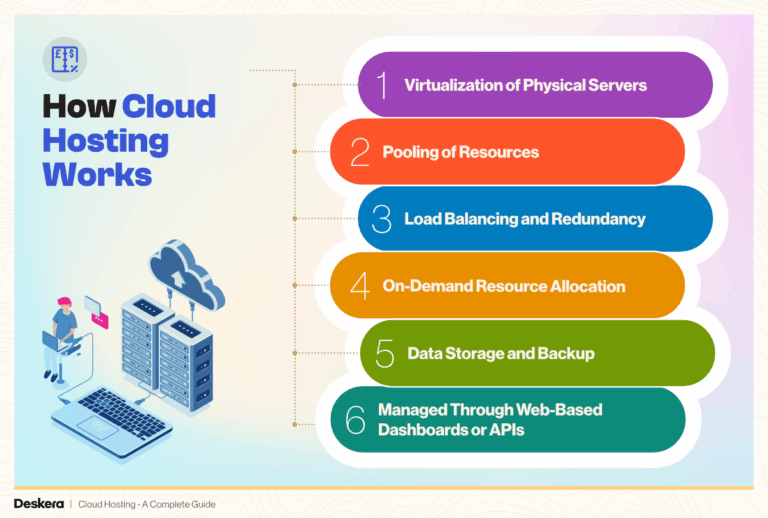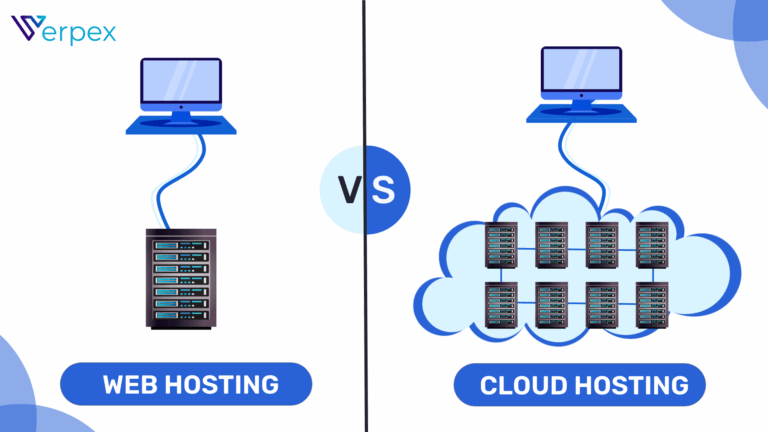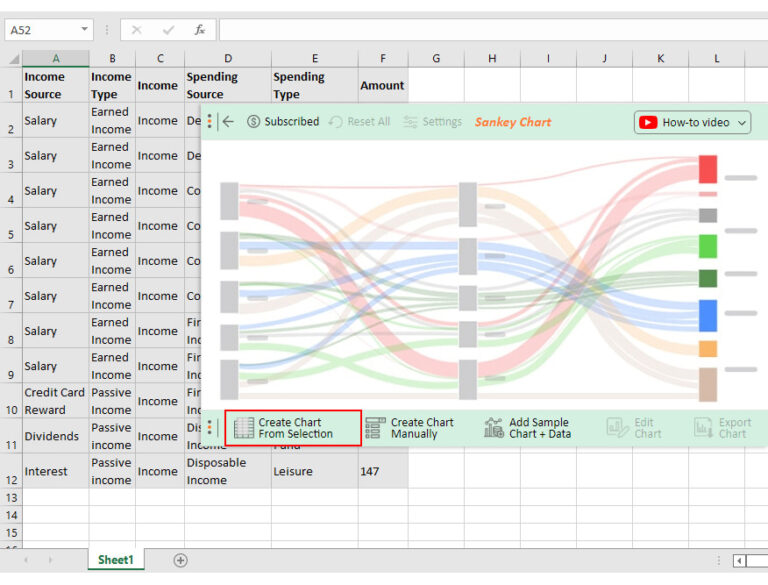What Is a CRM System? A Complete Guide for Businesses (2025)
Introduction: Why Your Business Needs More Than a Spreadsheet
Managing customer data can often feel like navigating a chaotic landscape filled with fragmented spreadsheets, scattered notes, and disorganized contact lists. As businesses grow, the challenges of tracking customer interactions, managing leads, and maintaining effective communication multiply. Relying solely on spreadsheets may initially seem manageable, but as the volume of data increases, so does the risk of errors, missed opportunities, and lost revenue. This is where a Customer Relationship Management (CRM) system becomes essential.
What is CRM?
CRM stands for Customer Relationship Management, and its core purpose is to centralize customer data and interactions in a single platform. By implementing a CRM system, businesses can streamline their processes, improve customer engagement, and gain valuable insights into their operations. Unlike spreadsheets, which can become cumbersome and error-prone, CRMs are designed to handle complex data efficiently, allowing teams to focus on building relationships rather than managing data.
The Comprehensive Guide Ahead
This guide is tailored for business owners, sales managers, and marketing professionals who are looking to understand the significant advantages of CRM systems over traditional data management methods. We will explore the following key areas:
-
What is a CRM? – A detailed explanation of CRM systems, how they function, and their role in modern business operations.
-
Core Features of CRM – An overview of essential features that every effective CRM should offer, including lead management, communication tools, document storage, and automation capabilities.
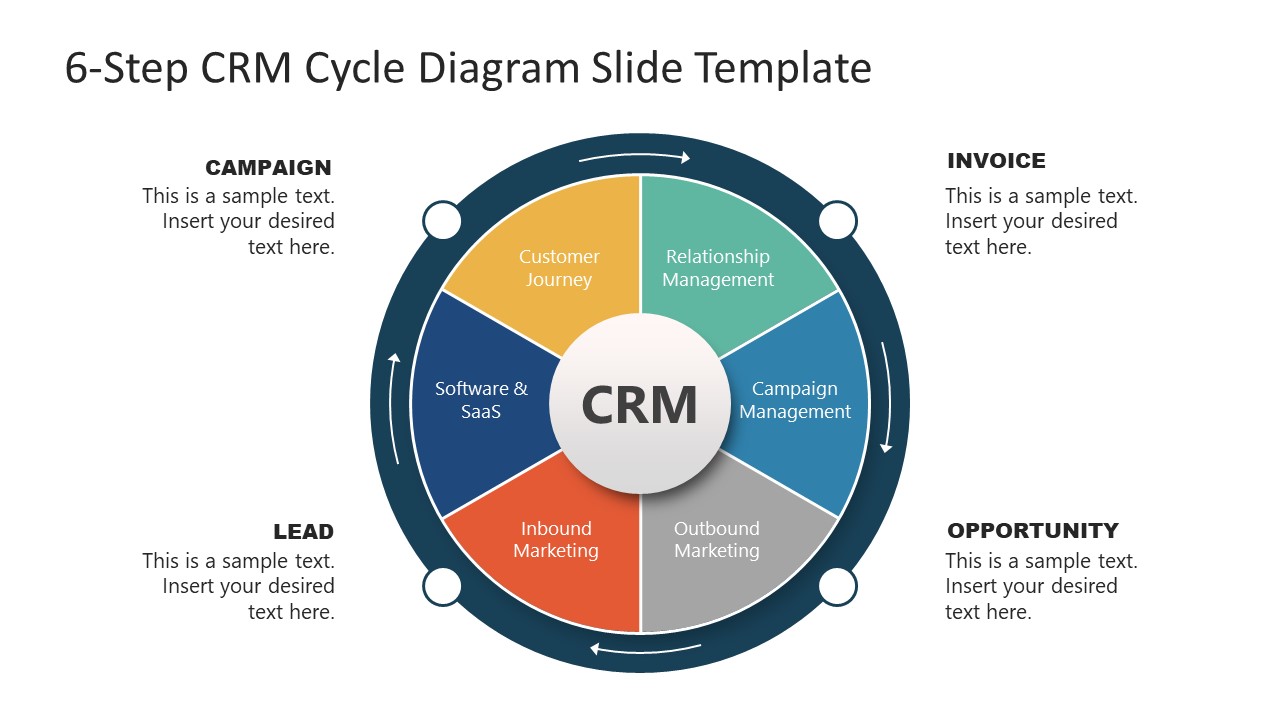
-
Key Benefits of Using CRM – Insight into the strategic advantages of adopting a CRM, such as improved customer relationships, increased sales efficiency, and enhanced data analytics.
-
Top CRM Platforms – A review of leading CRM platforms available in the market today, highlighting their unique features, pricing, and suitability for different business needs.
-
Choosing the Right CRM for Your Business – A step-by-step guide to help you evaluate and select the best CRM system tailored to your specific business requirements.
By the end of this guide, you will have a comprehensive understanding of CRM systems, empowering you to make informed decisions that will enhance your business’s customer management strategy and overall operational efficiency. Transitioning from spreadsheets to a CRM is not just a technological upgrade; it is a strategic move towards greater organization and success in managing customer relationships.
The Top 7 CRM Platforms of 2025
The 6 best CRMs for property management
In the review article titled “The 6 best CRMs for property management,” Monday.com stands out as a top choice for teams of any size seeking a highly collaborative and customizable platform. Its robust features facilitate seamless communication and project management, making it ideal for property managers who require flexibility and integration with various workflows. The platform’s adaptability ensures that it can cater to the unique needs of diverse property management teams.
- Website: monday.com
- Company Age: Approx. 30 years (domain registered in 1995)
The 7 Best CRM for Real Estate in 2025
In “The 7 Best CRM for Real Estate in 2025,” The Close highlights Wise Agent as a premier choice for real estate professionals, including agents and brokers. This comprehensive CRM solution offers a range of features tailored to streamline transactions, manage client relationships, and enhance productivity. Its user-friendly interface and all-in-one capabilities make it an ideal tool for real estate teams looking to optimize their operations and improve client engagement.
- Website: theclose.com
- Company Age: Approx. 24 years (domain registered in 2001)
Any recommendations for a basic CRM to manage a portfolio of 8 …
This review article highlights recommendations for basic CRM solutions suitable for managing a small portfolio, particularly appealing to small business owners and property managers. Notable options include Streak CRM, which integrates seamlessly with Gmail for tracking tasks and notes, and Notion, a versatile tool for organization. For those specifically focused on property management, Rentec Direct is suggested as a specialized alternative. These tools cater to users seeking efficient and user-friendly CRM systems.
- Website: reddit.com
- Company Age: Approx. 20 years (domain registered in 2005)
10 Best Property Management CRM Software for 2025
In the review article “10 Best Property Management CRM Software for 2025,” Podium highlights essential CRM tools tailored for property management businesses. Designed to enhance customer interactions and streamline operations, these platforms cater to property managers and real estate professionals seeking to improve tenant relationships, automate communications, and drive overall business success. The selection emphasizes user-friendly features and integration capabilities to support effective property management strategies.
- Website: podium.com
- Company Age: Approx. 28 years (domain registered in 1997)
What is a CRM System? A Deep Dive
Understanding CRM Systems
Customer Relationship Management (CRM) systems have evolved into essential tools for businesses aiming to streamline their interactions with customers, manage relationships, and enhance overall productivity. These platforms go beyond simple contact management to provide a comprehensive approach to managing a company’s relationships and interactions with potential and existing customers.
The Goals of a CRM System
At its core, the primary goal of a CRM system is to improve business relationships. This is achieved through several key objectives:
-
Centralized Customer Information: CRMs consolidate customer data into one accessible location. This includes contact details, communication history, purchase records, and preferences. By having a unified view of each customer, businesses can provide personalized experiences that foster loyalty.
-
Improved Communication: Effective communication is vital for maintaining strong relationships with customers. CRM systems facilitate seamless communication across various channels, including email, phone, and social media. This ensures that all team members are on the same page, reducing the chances of miscommunication or fragmented customer experiences.
-
Sales Automation: A CRM automates various sales processes, allowing sales teams to focus on building relationships rather than administrative tasks. Features such as lead scoring, follow-up reminders, and automated email campaigns help sales professionals nurture leads efficiently and close deals more effectively.
-
Enhanced Customer Insights: CRMs provide robust analytics and reporting features, enabling businesses to analyze customer behavior, track sales performance, and measure marketing effectiveness. These insights help organizations make data-driven decisions that can enhance customer satisfaction and drive growth.
-
Streamlined Marketing Efforts: With integrated marketing tools, CRMs allow businesses to segment their audience and target campaigns effectively. Automated marketing workflows can nurture leads through personalized content, increasing engagement and conversion rates.
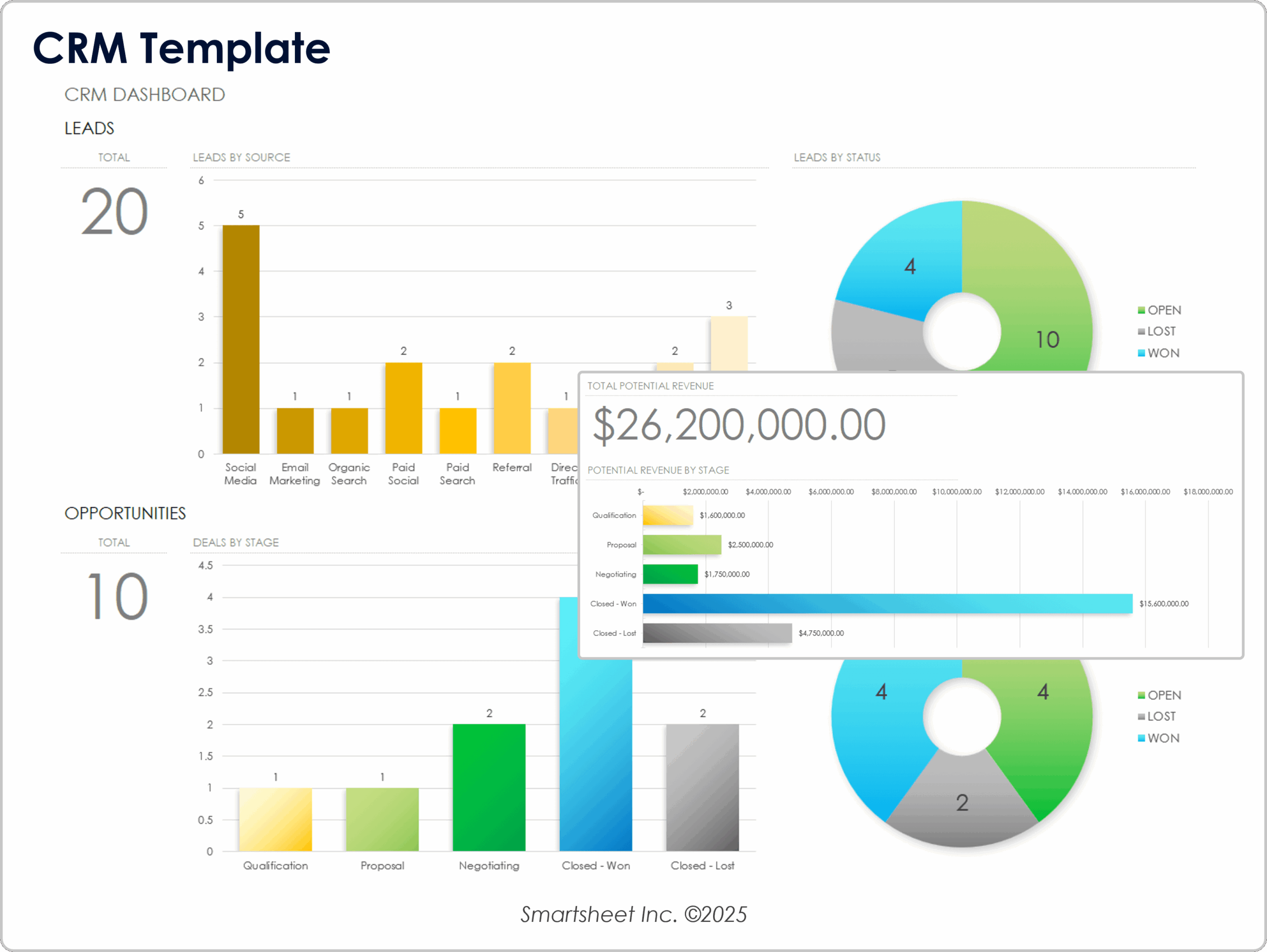
-
Customer Support and Service: CRM systems improve customer support by providing a comprehensive view of customer interactions. Support teams can access past communications and issues, allowing them to resolve inquiries more quickly and improve customer satisfaction.
Who Uses a CRM?
CRMs are not limited to a specific type of organization; they are utilized across various industries and departments. Here are some key users:
-
Sales Teams: Sales professionals rely on CRMs to track leads, manage opportunities, and forecast sales. The automation of repetitive tasks allows them to focus on building relationships and closing deals.
-
Marketing Departments: Marketers use CRMs to segment audiences, run targeted campaigns, and analyze the effectiveness of their marketing strategies. The integration of marketing automation tools within CRMs enables them to nurture leads through personalized content.
-
Customer Service Representatives: Customer service teams benefit from CRMs by having access to complete customer histories, which helps them provide timely and effective support. This can lead to improved customer satisfaction and retention.
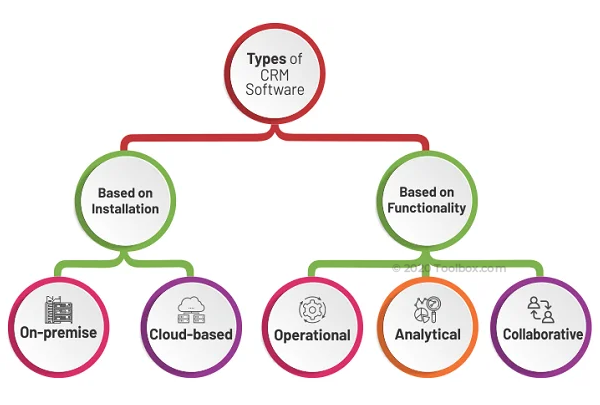
-
Management: Business leaders use CRM analytics to gain insights into overall performance, customer trends, and areas for improvement. This data-driven approach informs strategic decision-making and resource allocation.
-
Real Estate Professionals: In the real estate sector, CRMs help agents manage property listings, track client inquiries, and streamline communication with buyers and sellers. They are essential for maintaining relationships and ensuring no leads are overlooked.
Why a Spreadsheet Isn’t Enough
While spreadsheets have been a traditional method for managing customer information, they fall short in several critical areas:
-
Scalability: As businesses grow, managing customer data in spreadsheets becomes unwieldy. CRMs are designed to handle large volumes of data and can easily scale as the organization expands.
-
Collaboration: CRMs facilitate collaboration among team members by providing a centralized platform for sharing customer information. Spreadsheets, on the other hand, can lead to version control issues and data silos, making it difficult for teams to work together effectively.
-
Data Integrity: Manual data entry in spreadsheets can lead to errors and inconsistencies. CRMs automate data collection and updates, ensuring that information is accurate and up-to-date.
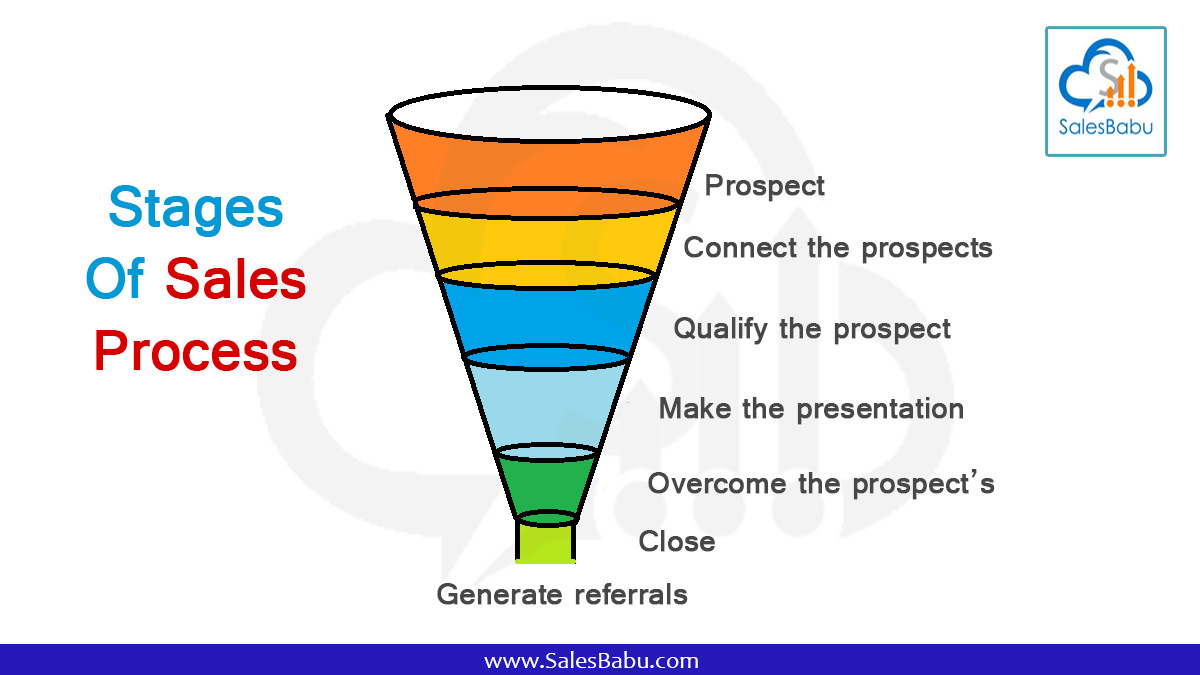
-
Automation: CRMs offer automation capabilities that spreadsheets simply cannot match. From automated follow-ups to marketing campaigns, CRMs help businesses streamline their processes and save time.
-
Analytics and Reporting: CRMs provide advanced analytics tools that enable businesses to generate reports and insights quickly. Spreadsheets require manual calculations and data manipulation, making it challenging to extract actionable insights.
-
Customer Engagement: The ability to track interactions and manage customer relationships is significantly enhanced in a CRM. Spreadsheets lack the functionality to monitor customer engagement over time, making it difficult to understand customer behavior and preferences.
Conclusion
In summary, a CRM system is a powerful tool that enables businesses to manage customer relationships effectively. By centralizing data, improving communication, automating processes, and providing valuable insights, CRMs enhance productivity across sales, marketing, and customer service departments. As organizations grow and customer interactions become more complex, relying solely on spreadsheets is no longer sufficient. Investing in a robust CRM system can empower businesses to build stronger relationships with their customers, drive sales, and ultimately achieve long-term success.
Core Features: What to Expect from a Modern CRM
Contact Management
What It Is
Contact management is the foundation of any CRM system. It involves storing and organizing customer and lead information, including names, email addresses, phone numbers, and interaction history. Modern CRMs provide a centralized database that allows users to access and manage contact details easily.
How It Works
A CRM enables users to create detailed profiles for each contact, which can include tags, notes, and segmentation based on various criteria such as demographics or purchase history. Advanced CRMs offer features like automated data entry, deduplication, and data enrichment from external sources, ensuring that the contact information remains current and accurate.
Direct Business Benefit
Having a well-organized contact management system enhances communication and relationship-building efforts. Sales and marketing teams can easily access relevant information, enabling personalized outreach that can lead to higher engagement and conversion rates. This efficiency reduces the time spent searching for information and allows teams to focus on building meaningful relationships.
Lead and Opportunity Management
What It Is
Lead and opportunity management encompasses the processes used to track potential customers (leads) and their progress through the sales funnel. This feature allows businesses to identify promising leads and prioritize them based on their likelihood to convert into paying customers.
How It Works
Modern CRMs utilize lead scoring systems that assess leads based on predefined criteria such as engagement level, demographic information, and past interactions. Users can categorize leads, assign them to team members, and track their journey through various stages of the sales pipeline. This visibility allows sales teams to focus their efforts on leads that are most likely to convert.
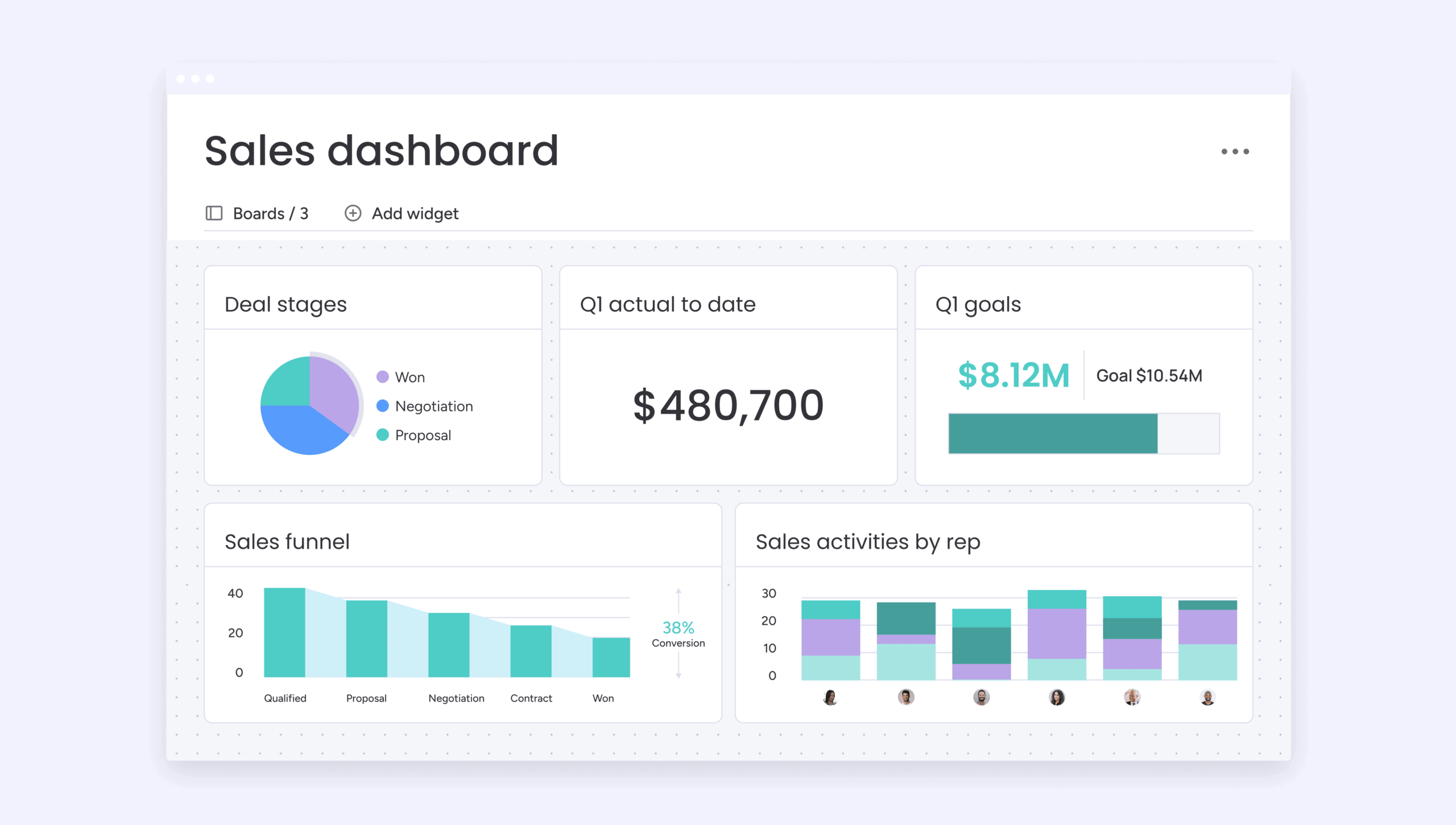
Direct Business Benefit
By effectively managing leads and opportunities, businesses can increase conversion rates and shorten sales cycles. Prioritizing high-quality leads helps sales teams allocate their resources more efficiently, ultimately driving revenue growth and improving overall sales performance.
Sales Pipeline Visualization
What It Is
Sales pipeline visualization is a graphical representation of the stages that prospects go through before becoming customers. This feature provides a clear overview of the sales process, helping teams understand where each lead stands and what actions are necessary to move them forward.
How It Works
CRMs typically offer customizable pipeline views that allow users to drag and drop leads between stages, such as “New Lead,” “Negotiation,” and “Closed Won.” These visual representations can include metrics such as deal value, expected close dates, and win probabilities, providing immediate insights into the health of the sales pipeline.
Direct Business Benefit
Visualizing the sales pipeline enables teams to identify bottlenecks and areas for improvement. It fosters better collaboration and communication among team members, ensuring that everyone is aligned on priorities and strategies. This clarity can lead to more informed decision-making and ultimately higher sales performance.
Task and Activity Tracking
What It Is
Task and activity tracking involves managing and monitoring tasks related to customer interactions, sales activities, and follow-ups. This feature ensures that no important activities fall through the cracks and that team members are held accountable for their responsibilities.
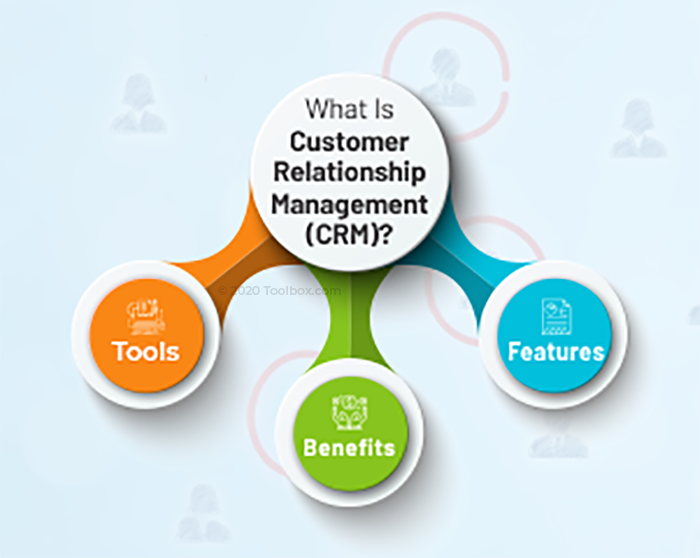
How It Works
Modern CRMs allow users to create, assign, and track tasks associated with specific contacts or deals. Notifications and reminders can be set up to alert users about upcoming deadlines or overdue tasks. Some CRMs also integrate calendars to provide a comprehensive view of scheduled activities.
Direct Business Benefit
Effective task and activity tracking enhances productivity and accountability within teams. By keeping everyone informed about their responsibilities, businesses can ensure that customer interactions are timely and effective, leading to improved customer satisfaction and retention rates.
Marketing Automation
What It Is
Marketing automation refers to the use of technology to automate repetitive marketing tasks, such as email campaigns, social media posting, and lead nurturing. This feature is essential for streamlining marketing efforts and ensuring consistent communication with leads.
How It Works
CRMs with marketing automation capabilities allow users to create automated workflows that trigger actions based on specific events, such as a lead filling out a form or a contact reaching a certain score. Users can segment their audience and tailor messages accordingly, ensuring that the right content reaches the right people at the right time.
Direct Business Benefit
By automating marketing tasks, businesses can save time, reduce human error, and ensure that leads are nurtured effectively throughout their journey. This leads to higher engagement rates, improved lead conversion, and ultimately, increased revenue.
Reporting and Analytics
What It Is
Reporting and analytics involve the collection and analysis of data to gain insights into business performance. Modern CRMs provide robust reporting features that allow users to track key performance indicators (KPIs) and visualize data trends over time.
How It Works
Users can generate custom reports based on various parameters, such as sales performance, lead conversion rates, and customer engagement metrics. Many CRMs offer dashboard features that provide real-time insights, enabling users to monitor performance at a glance.
Direct Business Benefit
Data-driven decision-making is crucial for business success. By leveraging reporting and analytics, businesses can identify strengths and weaknesses in their sales and marketing strategies, allowing them to make informed adjustments that can enhance performance and drive growth.
Integrations
What It Is
Integrations refer to the ability of a CRM to connect with other software applications and tools, creating a seamless flow of data across platforms. This feature is vital for businesses that rely on multiple software solutions for different functions.
How It Works
Modern CRMs support integrations with a wide range of applications, including email marketing platforms, accounting software, and customer support tools. Integration capabilities can range from simple data syncing to complex workflows that trigger actions across multiple systems.
Direct Business Benefit
By integrating their CRM with other tools, businesses can enhance their operational efficiency and improve data accuracy. This connectivity reduces the need for manual data entry and ensures that all teams have access to the same up-to-date information, leading to better collaboration and more cohesive customer experiences.
Conclusion
In conclusion, a modern CRM system is equipped with a suite of core features that are essential for effective customer relationship management. From contact management and lead tracking to marketing automation and robust reporting capabilities, these features empower businesses to streamline their processes, enhance productivity, and drive growth. For business owners, sales managers, and marketing professionals, understanding these core functionalities is crucial for selecting the right CRM that aligns with their unique operational needs and strategic goals. By leveraging the power of a modern CRM, organizations can foster better relationships with their customers, optimize their sales processes, and ultimately achieve greater business success.
The 3 Types of CRM Systems Explained
Overview of CRM Types
Customer Relationship Management (CRM) systems are essential tools for businesses looking to streamline their operations, enhance customer engagement, and improve data management. Understanding the different types of CRM systems can help business owners and managers select the right solution for their specific needs. Below is a comparative overview of the three main types of CRM systems: Operational CRM, Analytical CRM, and Collaborative CRM.
| CRM Type | Primary Goal | Key Features | Best For (Department) |
|---|---|---|---|
| Operational CRM | Streamline customer interactions | Contact management, sales automation, marketing automation | Sales, Marketing, Customer Service |
| Analytical CRM | Analyze customer data for insights | Data mining, reporting, predictive analytics | Marketing, Data Analysis |
| Collaborative CRM | Enhance communication and collaboration | Shared databases, communication tools, project management | Sales, Marketing, Project Management |
Operational CRM
Operational CRM systems are designed to automate and streamline various customer-facing processes. The primary goal of an operational CRM is to improve the efficiency of sales, marketing, and customer service departments by managing customer interactions and data throughout the customer lifecycle.
Key features of operational CRMs include contact management, sales automation tools, and marketing automation functionalities. For example, a property management company might use an operational CRM to manage tenant inquiries, track maintenance requests, and automate lease renewal notifications. By centralizing communication and automating routine tasks, operational CRMs allow teams to focus on building relationships and closing deals rather than getting bogged down by administrative tasks.
An example of an operational CRM is HubSpot CRM, which provides tools for tracking leads, managing communications, and automating marketing campaigns. Sales teams can use HubSpot to schedule follow-ups, send personalized emails, and analyze the effectiveness of their outreach efforts, thereby increasing their chances of converting leads into tenants or buyers.
Analytical CRM
Analytical CRM systems focus on analyzing customer data to gain insights that can drive strategic decisions. The primary goal of an analytical CRM is to understand customer behavior, preferences, and trends through data analysis, which helps businesses tailor their offerings and improve customer satisfaction.
Key features of analytical CRMs include data mining, reporting, and predictive analytics. For instance, a real estate company might use an analytical CRM to assess market trends and customer demographics, which can inform their marketing strategies and property offerings. By leveraging data analysis, businesses can identify high-value customers, predict future buying behavior, and segment their audience for more targeted marketing campaigns.
Salesforce, a well-known analytical CRM, provides robust reporting and analytics capabilities that allow businesses to visualize customer data and generate actionable insights. This enables marketing teams to refine their strategies based on actual customer behavior, ultimately leading to more effective campaigns and improved ROI.
Collaborative CRM
Collaborative CRM systems aim to enhance communication and collaboration among various departments within an organization, as well as with external stakeholders such as customers and partners. The primary goal of a collaborative CRM is to create a shared view of customer interactions and ensure that all teams have access to the same information.
Key features of collaborative CRMs include shared databases, communication tools, and project management capabilities. For example, a marketing team and a sales team might use a collaborative CRM to coordinate their efforts in launching a new property listing. By sharing insights and updates, both teams can work together more effectively, ensuring that leads are followed up promptly and marketing materials are aligned with sales goals.
An example of a collaborative CRM is monday.com, which provides a platform for teams to collaborate on projects, manage workflows, and share information in real-time. This type of CRM is particularly beneficial for businesses that rely on cross-departmental collaboration to enhance customer experiences and drive sales.
Conclusion
Selecting the right type of CRM system is crucial for businesses looking to optimize their customer relationship management strategies. Operational CRMs are best suited for organizations focused on automating customer interactions, while analytical CRMs excel at providing insights through data analysis. Collaborative CRMs, on the other hand, foster teamwork and communication across departments. By understanding these three types of CRM systems and their respective features and benefits, business owners and managers can make informed decisions that align with their organizational goals and enhance overall customer engagement.
Key Business Benefits of Using a CRM
1. Centralized Customer Data
One of the most significant advantages of implementing a Customer Relationship Management (CRM) system is the centralization of customer data. A CRM consolidates all information related to leads, prospects, and customers into a single database that is easily accessible to all relevant team members. This centralized repository ensures that everyone is on the same page regarding customer interactions, preferences, and history. By having a complete view of each customer, businesses can tailor their communications and offers, leading to more personalized interactions. This not only enhances the customer experience but also reduces the risk of miscommunication and information silos, ultimately improving operational efficiency.
2. Improved Sales Productivity
CRMs are designed to streamline sales processes, allowing sales teams to focus more on closing deals rather than on administrative tasks. By automating routine tasks such as lead scoring, follow-up reminders, and reporting, a CRM frees up valuable time for sales professionals to engage with prospects. Additionally, features like sales pipeline management provide sales teams with a clear visual representation of where each prospect is in the sales cycle, enabling them to prioritize their efforts effectively. This level of organization and efficiency translates into improved sales productivity, as teams can manage their time and resources more effectively, leading to increased revenue.
3. Enhanced Customer Retention
Customer retention is critical for long-term business success, and a CRM plays a vital role in fostering lasting relationships with clients. By tracking customer interactions and feedback, businesses can identify potential issues before they escalate and proactively address them. Moreover, CRMs enable businesses to segment their customers based on various criteria, allowing for targeted marketing campaigns and personalized communications. Regular engagement through automated reminders for follow-ups, renewals, or special offers can significantly enhance customer satisfaction and loyalty. When customers feel valued and understood, they are more likely to continue their relationship with the business, ultimately leading to higher retention rates.
4. Data-Driven Decision Making
In today’s data-driven world, the ability to make informed decisions based on accurate and timely information is crucial for business success. A CRM provides comprehensive analytics and reporting tools that allow businesses to track key performance indicators (KPIs) and assess the effectiveness of their sales and marketing strategies. By analyzing customer behavior, sales trends, and campaign performance, businesses can identify areas for improvement and make data-backed decisions that enhance overall performance. This level of insight empowers management to allocate resources more effectively, optimize marketing strategies, and refine sales tactics, leading to better business outcomes.
5. Scalable Growth
As businesses grow, so do their customer bases and the complexity of managing relationships. A robust CRM system is designed to scale alongside your business, accommodating increased data volume and user demands without sacrificing performance. This scalability ensures that businesses can maintain high levels of service and efficiency, even as they expand into new markets or introduce new products and services. With a CRM, businesses can seamlessly add new users, integrate additional functionalities, and adapt processes to meet evolving needs. This flexibility not only supports growth but also positions businesses to seize new opportunities and respond effectively to changing market dynamics.
Conclusion
Implementing a CRM system is a strategic decision that offers numerous benefits for businesses looking to enhance customer relationships, improve operational efficiency, and drive growth. By centralizing customer data, boosting sales productivity, enhancing customer retention, enabling data-driven decision-making, and supporting scalable growth, a CRM becomes an invaluable tool in today’s competitive landscape. For business owners, sales managers, and marketing professionals, investing in a CRM is not just about adopting new technology; it’s about transforming how their organization interacts with customers and achieving long-term success.
How to Choose the Right CRM: A 7-Step Buyer’s Guide
1. Define Your Business Goals and Needs
Before diving into the CRM selection process, take a step back and assess your business’s unique goals and needs. This step is crucial as it lays the foundation for your CRM selection.
Understand Your Objectives
Identify what you want to achieve with a CRM system. Are you looking to improve lead management, enhance customer service, streamline communication, or boost sales efficiency? Document specific objectives such as increasing lead conversion rates, improving tenant satisfaction, or automating marketing tasks.
Identify Key Features Required
Once you have clear goals, make a list of the features that are essential for your organization. Common features to consider include:
- Lead management tools: To track and prioritize leads effectively.
- Communication features: To centralize interactions with clients and tenants.
- Document storage: For easy access to important files and records.
- Automation capabilities: To reduce manual tasks and improve efficiency.
2. Establish Your Budget
Budgeting is a vital part of the CRM selection process. Understanding how much you are willing to invest will help you narrow down your options.
Determine Total Cost of Ownership
Consider not just the initial purchase price but also ongoing costs. These may include:
- Monthly or annual subscription fees
- Implementation costs
- Training and support fees
- Costs for additional features or integrations
Align with Business Goals
Ensure that your budget aligns with the potential return on investment (ROI) of implementing a CRM. A well-chosen CRM can lead to increased efficiency, higher sales, and improved customer satisfaction, which can offset the initial investment.
3. Consider Ease of Use and User Adoption
A CRM is only as effective as its users. Therefore, ease of use and user adoption should be a priority during your selection process.
User-Friendly Interface
Look for a CRM that offers an intuitive interface. Complex systems can lead to frustration and decreased productivity. A user-friendly CRM will facilitate quick training and onboarding, ensuring that your team can start using it effectively right away.
Training and Support
Evaluate the training resources and customer support provided by the CRM vendor. Comprehensive training materials, tutorials, and responsive support can significantly enhance user adoption and satisfaction.
4. Check for Essential Integrations
A CRM should seamlessly integrate with your existing tools and systems to create a cohesive workflow.
Identify Existing Tools
Take stock of the tools your team currently uses, such as email marketing software, accounting tools, and property management systems. This will help you identify the integrations you need.
Verify Integration Capabilities
Ensure that the CRM you are considering can integrate with these essential tools. This will allow for a smoother transition and better data flow across platforms, enhancing your team’s productivity.
5. Evaluate Scalability for Future Growth
Your business is likely to evolve, and your CRM should be able to grow with you.
Assess Scalability Features
When evaluating potential CRMs, consider how easily the platform can scale. Look for features such as:
- User capacity: Can the system accommodate more users as your team grows?
- Advanced functionalities: Are there additional features or modules available for purchase as your needs expand?
- Flexibility: Can the CRM adapt to changing business processes or industry demands?
Future-Proofing
Choosing a scalable CRM means you won’t have to switch systems as your business grows. This can save you time and resources in the long run.
6. Request Demos and Start Free Trials
Seeing a CRM in action can provide invaluable insights into its functionality and suitability for your business.
Schedule Demos
Reach out to CRM vendors to schedule live demos. During these sessions, ask specific questions related to your business goals and needs. Pay attention to how the CRM handles the features that are most important to you.
Utilize Free Trials
Many CRM providers offer free trials. Take advantage of these trials to explore the system firsthand. Involve team members who will be using the CRM regularly, as their feedback will be crucial in making a final decision.
7. Read Reviews and Case Studies
Once you have narrowed down your options, do your homework by reading reviews and case studies.
Explore User Feedback
Look for reviews on platforms like G2, Capterra, or Trustpilot. User feedback can provide insights into real-world experiences, including strengths and weaknesses of the CRM.
Analyze Case Studies
Find case studies relevant to your industry or business size. These documents often illustrate how other businesses have successfully implemented the CRM and the outcomes they achieved. This can help you gauge whether the CRM aligns with your goals and expectations.
Conclusion
Choosing the right CRM for your business is a significant decision that can impact your operations, customer relationships, and overall success. By following these seven steps—defining your goals, establishing a budget, considering user adoption, checking for integrations, evaluating scalability, requesting demos, and reading reviews—you can make an informed decision that will benefit your organization for years to come. Remember, the right CRM is not just a software purchase; it’s an investment in your business’s future.
CRM vs. ERP: Understanding the Key Differences
Definitions of CRM and ERP
Customer Relationship Management (CRM) systems are designed to manage a company’s interactions with current and potential customers. By utilizing data analysis about customers’ history with the company, CRMs help organizations improve relationships, streamline processes, and increase profitability. They focus primarily on sales, marketing, and customer service functions.
Enterprise Resource Planning (ERP) systems are integrated management systems that help businesses manage core processes across different departments, including finance, HR, supply chain, and manufacturing. ERPs provide a centralized framework that facilitates the flow of information between all business functions inside the organization, ensuring that data is accessible and consistent across departments.
Comparison Table
| Aspect | CRM (Customer-Facing) | ERP (Business Operations-Facing) |
|---|---|---|
| Primary Focus | Managing customer relationships and sales | Managing business processes and operations |
| Core Users | Sales teams, marketing professionals, customer service | Operations managers, finance teams, HR, supply chain |
| Key Processes | Lead management, sales tracking, customer service | Financial management, inventory control, procurement, HR management |
| Main Goal | Enhance customer satisfaction and loyalty | Improve operational efficiency and resource management |
Detailed Comparison
Primary Focus
The primary focus of a CRM system is to enhance the interaction between a business and its customers. This involves tracking customer interactions, managing leads, and nurturing relationships to drive sales. CRMs are tailored to improve customer engagement and increase sales effectiveness, which is vital for businesses that rely heavily on customer relationships.
In contrast, an ERP system is focused on integrating and managing core business processes. This includes everything from financial reporting to supply chain management. The goal of an ERP is to provide a holistic view of the business operations and facilitate better decision-making by ensuring that all departments have access to the same information in real-time.
Core Users
CRMs are primarily used by customer-facing roles such as sales teams, marketing professionals, and customer service agents. These users depend on the system to track customer interactions, manage marketing campaigns, and handle service requests efficiently.
On the other hand, ERPs are utilized by various departments across an organization, including operations, finance, human resources, and supply chain management. The versatility of ERP systems means they are essential for ensuring that all business functions work together seamlessly.
Key Processes
In terms of key processes, CRMs focus on customer-centric activities such as lead generation, opportunity tracking, sales forecasting, and customer support. These processes are crucial for building and maintaining strong customer relationships and driving sales growth.
ERPs, however, encompass a broader range of business functions. They manage financial transactions, inventory levels, order processing, production scheduling, and human resources. By integrating these processes, ERPs help organizations streamline operations and reduce redundancies, leading to improved efficiency.
Main Goal
The main goal of a CRM is to enhance customer satisfaction and loyalty. By providing tools for personalized communication and efficient service, CRMs help businesses build lasting relationships with customers, which can lead to increased sales and customer retention.
Conversely, the main goal of an ERP is to improve operational efficiency and resource management. By providing a unified platform for all business processes, ERPs help organizations reduce costs, minimize errors, and enhance productivity.
Do You Need a CRM, ERP, or Both?
Whether a business needs a CRM, an ERP, or both depends on its specific needs and operational structure.
- If your business primarily focuses on customer interactions, sales, and marketing, a CRM system may be sufficient to manage those relationships effectively.
- If your business involves complex operational processes that require integration across departments, an ERP system would be essential to streamline these functions.
- For organizations that have both customer-facing and operational needs, implementing both systems can provide a comprehensive solution that enhances customer relations while also optimizing internal processes.
In conclusion, understanding the distinct roles of CRM and ERP systems will help business owners and managers make informed decisions about which tools to implement to meet their operational goals.
Best Practices for Successful CRM Implementation
Understanding the Importance of CRM Implementation
Implementing a Customer Relationship Management (CRM) system is a critical step for any organization looking to enhance customer interactions, streamline operations, and ultimately drive growth. However, the success of a CRM implementation is often contingent upon several best practices that can help avoid common pitfalls. This guide will walk you through essential strategies to ensure a successful CRM implementation.
Getting Leadership Buy-In
Importance of Leadership Support
One of the most crucial steps in implementing a CRM system is securing buy-in from leadership. The support of senior management not only provides the necessary resources but also fosters a culture that values customer relationship management. Leadership should understand the strategic benefits of the CRM, including improved customer service, better data analysis, and enhanced team collaboration.
Strategies to Gain Buy-In
-
Present Data-Driven Insights: Use statistics and case studies to demonstrate how a CRM can positively impact the organization. Highlight improvements in sales, customer retention, and operational efficiency seen in similar businesses.
-
Involve Leaders Early: Engage leadership in the selection process of the CRM system. Their input can help tailor the solution to meet organizational needs, and their involvement can make them advocates for the project.
-
Set Clear Objectives: Articulate clear, measurable objectives for what the CRM implementation aims to achieve. This clarity will help leaders understand the value of the project and its alignment with broader business goals.
Planning Your Data Migration
Importance of Data Quality
Data migration is often one of the most complex aspects of CRM implementation. Poorly managed data transfer can lead to inaccuracies that undermine the effectiveness of the new system. It’s vital to ensure that your data is clean, relevant, and well-organized before migration.
Steps for Effective Data Migration
-
Conduct a Data Audit: Assess the current state of your data. Identify duplicates, outdated information, and any gaps that need to be filled. This audit should also determine what data is essential for the CRM.
-
Map Data Fields: Create a comprehensive mapping of how existing data fields will correspond to the new CRM’s data structure. This helps in ensuring that all necessary information is transferred correctly.
-
Test the Migration: Before executing a full-scale data migration, conduct a pilot test with a small subset of data. This allows you to identify potential issues and rectify them before affecting the entire dataset.
-
Establish a Backup Plan: Always maintain a backup of your existing data. In the event of any failures during migration, this ensures that you have a secure copy of all critical information.
Customizing the CRM to Your Process (Not the Other Way Around)
Importance of Customization
A common mistake organizations make is attempting to mold their processes to fit the CRM system. Instead, the CRM should be tailored to align with existing workflows and business practices to maximize efficiency and user adoption.
Steps for Effective Customization
-
Identify Core Processes: Clearly outline your current processes and workflows that the CRM will support. This includes lead tracking, customer service interactions, and reporting.
-
Utilize Custom Fields and Features: Most CRM systems offer customizable fields and features. Use these to reflect your business’s unique needs and terminologies, making the system intuitive for users.
-
Involve End Users in Customization: Gather feedback from the teams that will be using the CRM daily. Their insights can guide the customization process to ensure the system is user-friendly and meets their operational needs.
Effective User Training and Onboarding
Importance of Training
Even the most sophisticated CRM is ineffective if users do not know how to utilize it properly. Comprehensive training and onboarding are essential to ensure that your team can leverage the CRM’s capabilities fully.
Strategies for Effective Training
-
Develop a Training Plan: Create a structured training program that covers all aspects of the CRM, including basic functions, advanced features, and best practices. This plan should cater to different user roles and their specific needs.
-
Utilize Multiple Training Formats: Offer training through various formats such as hands-on workshops, video tutorials, and user manuals. This approach accommodates different learning styles and reinforces the training material.
-
Provide Ongoing Support: Establish a support system for users post-implementation. This could include a dedicated help desk, regular check-ins, and refresher courses to address any ongoing challenges.
Setting Clear KPIs to Measure Success
Importance of KPIs
Key Performance Indicators (KPIs) are essential for measuring the success of your CRM implementation. By establishing clear metrics, you can evaluate the effectiveness of the CRM and make informed decisions for future adjustments.
Steps to Define KPIs
-
Align KPIs with Objectives: Ensure that your KPIs are directly linked to the objectives you set during the leadership buy-in phase. Common KPIs may include customer satisfaction scores, lead conversion rates, and time spent on customer interactions.
-
Make KPIs Specific and Measurable: Use the SMART criteria (Specific, Measurable, Achievable, Relevant, Time-bound) to define your KPIs. This ensures clarity and helps in accurately assessing performance.
-
Regularly Review and Adjust KPIs: Establish a routine for reviewing your KPIs. This allows you to adapt to changing business needs and ensures that the CRM continues to deliver value over time.
Conclusion
Successfully implementing a CRM system requires careful planning and execution. By gaining leadership buy-in, meticulously planning data migration, customizing the CRM to fit your processes, providing effective user training, and setting clear KPIs, businesses can avoid common pitfalls and maximize the benefits of their CRM investment. With these best practices in place, organizations can enhance customer relationships, streamline operations, and drive sustainable growth.
Frequently Asked Questions (FAQs)
1. What is a CRM for property management?
A Customer Relationship Management (CRM) system for property management is a specialized software tool designed to help property managers streamline their operations. It facilitates the management of relationships with tenants, prospects, vendors, and maintenance teams. Key functionalities include tracking maintenance requests, managing lease agreements, automating tenant communications, and centralizing data on property performance and occupancy rates.
2. How much does a CRM for property management cost?
The cost of a CRM for property management can vary significantly based on the provider, features included, and the size of your team. Generally, pricing can range from as low as $9 per user per month for basic plans to over $50 per user per month for more advanced functionalities. Many CRM providers also offer tiered pricing models that increase in cost as additional features or users are added. It’s essential to evaluate your specific needs to find the most cost-effective solution.
3. Can a CRM be used for B2C (Business to Consumer) in property management?
Yes, a CRM can be effectively utilized for B2C interactions in property management. It helps property managers maintain relationships with tenants and prospective renters, enabling them to manage inquiries, automate communications, and track tenant satisfaction. By leveraging a CRM, property managers can enhance their customer service and engagement efforts, ultimately leading to higher tenant retention rates.
4. How long does it take to implement a CRM for property management?
The implementation time for a CRM can vary widely based on the complexity of the system, the size of your organization, and the level of customization required. On average, implementation can take anywhere from a few weeks to several months. This includes time for data migration, training staff, and configuring the system to meet your specific needs. It’s important to plan for adequate training and support to ensure a smooth transition.
5. What features should I look for in a property management CRM?
When selecting a property management CRM, consider features such as lead management tools, communication capabilities, document storage, automation for tasks like lease renewals, and integration with other software (e.g., accounting or marketing tools). Additionally, look for advanced reporting and analytics functionalities to track property performance and tenant metrics effectively.
6. How does a CRM improve tenant communication?
A CRM enhances tenant communication by centralizing all interactions in one platform. This allows property managers to automate communication, such as sending reminders for rent payments or maintenance schedules. Furthermore, CRMs often include features for tracking communication history, enabling managers to respond promptly to tenant inquiries and maintain consistent engagement.
7. Is training necessary when implementing a new CRM?
Yes, training is essential when implementing a new CRM, as it ensures that all users understand how to leverage the system effectively. Most CRM providers offer training sessions, tutorials, and ongoing support to help teams adapt. Investing time in training can significantly improve user adoption rates and maximize the benefits of the CRM.
8. Can a property management CRM integrate with other software?
Most modern property management CRMs offer integration capabilities with various third-party applications, such as accounting software, marketing tools, and payment processors. This integration is crucial for creating a seamless workflow, allowing property managers to centralize their operations and reduce the need for manual data entry across different platforms. When choosing a CRM, assess its integration options to ensure it aligns with your existing tools.
Conclusion: Taking the Next Step in Customer Management
The Role of CRM in Modern Business Growth
In today’s competitive landscape, a Customer Relationship Management (CRM) system is not just an operational tool; it is a foundational element for driving business growth. By centralizing customer interactions and automating various processes, a CRM empowers businesses to enhance customer relationships, streamline communication, and improve overall efficiency. This is particularly crucial in industries such as property management, real estate, and sales, where managing multiple leads, tenants, or clients can become overwhelming without a robust system in place.
Aligning CRM with Business Needs
When selecting a CRM, it is essential to ensure that the system aligns with your specific business needs. Different organizations have varying priorities—some may require advanced lead management tools, while others may benefit more from integrated communication features or marketing automations. A well-chosen CRM can adapt to your workflows and scale as your business grows, making it a valuable long-term investment.
Take the Next Step
Now is the time to evaluate your current sales and marketing workflows. Reflect on how you manage customer interactions and identify areas for improvement. Are you missing out on leads? Is communication with clients streamlined? By taking the initial step to assess your operations, you can better understand the features and capabilities you require in a CRM.
We encourage you to embark on this journey of transformation. Explore available CRM options, request demos, and engage with your team to gather insights. The right CRM will not only enhance your customer management processes but also position your business for sustained growth and success. Start today—your future customers will thank you.
Important Disclaimer
⚠️ Important Disclaimer
The information and reviews in this guide are for educational purposes, based on publicly available data. We are not affiliated with any software providers mentioned. Features and pricing change frequently. Always conduct your own due diligence and request a demo before committing to a CRM platform.
